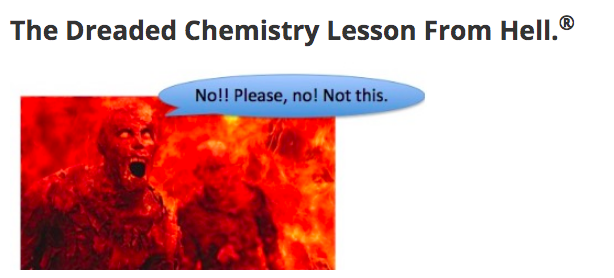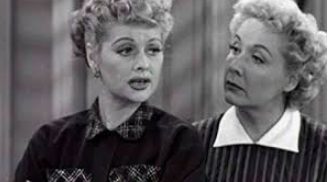Taste is subjective. So is smell. But when the headline in the January 22, 2013 issue of The Mirror reads:
"The French stench: Gas leak from factory in France causes a stink 200 miles away in UK"
and the subheadline reads:
"The leak released a colourless gas called mercaptan – listed in the Guinness Book of Records as “the world’s smelliest substance"
... it's a pretty good bet that this isn't going to elicit a huge range of opinions about the scent of "mercaptan" (1) – the odorant that is used to warn people of a gas leak. Almost any adjective conveying vileness will suffice: putrid, fetid, nauseating icky, etc.
The incident in question was a spill at the Lubrizol factory in Rouen, France in 2013. It's difficult to tell which chemical spilled since "mercaptan" is a class of stinky compounds, not a unique chemical. In reality, it doesn't much matter which mercaptan was spilled because all low molecular weight mercaptans are evil-smelling and different ones are used to add an odor to different types of natural gas. (2) More on this below.
TIME TO GET EDUCATED
Despite the ambiguity of the name "mercaptan," we can make an educated guess about the actual culprit based on the following information. However, it is with profound sadness that must inform you that before we proceed you must prepare yourself for...

In fact, this DCLFH® is even worse than normal. It's about chemical nomenclature – a subject so repugnant that legend has it that chemists are advised to keep a suicide hotline number on their phone favorites list when it's time to learn how to name organic chemicals. Apologies in advance. Here's why the ambiguity may not be so ambiguous after all – chemical slang.
- CH3CH2OH is universally called "alcohol," even though its chemical name is ethyl alcohol.
- CH3CH2OCH2CH3 is commonly called "ether," but its chemical name is diethyl ether.
- CH3CH2OC(O)NH2 is known as "urethane," but is really called ethyl urethane (3). Same reasoning.
In each case, the names in quotes above are incomplete (slang, really) because "alcohol" "ether" and "urethane" are classes of compounds, not specific chemicals. To have a "real" chemical the rest of the molecule – an alkyl group, for example methyl, ethyl, propyl, butyl... must also be defined. For example:
"Alcohol" does not describe a single unique compound with a known structure, but methyl alcohol (CH3OH) does. The same holds true for "ether" (a class) and dimethyl ether – a single chemical with the chemical structure CH3OCH3. With a correct name, a chemist can unambiguously determine the structure of the molecule (and vice versa).
So, why are the three names above not real chemicals but still commonly used? It's just another quirk of organic nomenclature (as if we need one). By convention when the alkyl group is not specified in a common chemical, ethyl is assumed. It's chemical slang and this type of slang originated from the early days of organic chemistry.
So, it's a pretty good bet that when you see the term "mercaptan" in the news it really means ethyl mercaptan – the most common odorant in cooking gas. Its formula is CH3CH2SH.
Slang and shortcuts are fine, that is, until you run into something like this:

(Left) Lucy. (Right) A woman with no name. Photo: IMDb
Before we get to the rest of the article, I would be lying if I said that I wasn't amused by quotes about the smell of some volatile mercaptans.
- “It is truly, truly awful – like the worst flatulent person ever standing with their back turned to you."
- “I turned round to my boyfriend and told him off." (Like women never fart?)
- “I’ve heard the French are smelly, but this is taking it to a whole new level.”
- "It makes innocent downwind pedestrians stagger, clutch their stomachs, and flee in terror."
- "Something that smells like hell's dumpster."
and the best...
- "People start diving out of windows and vomiting into wastebaskets, so the quality of the data starts to deteriorate."
WHY ETHYL MERCAPTAN IS SUCH A GOOD ODORANT
Ethyl mercaptan is a volatile, low boiling liquid (BP 97°C) and has an odor described (among other things) as rotten cabbage. What makes is "special" is that it can be detected at an extremely low concentration – 0.00014 ppm, which is equivalent to .00014 mg per liter of air. The volume of an average bedroom with an 8' ceiling is about 1000 cubic feet, so one would be able to detect 0.14 mg 0.000000361624 milligrams per liter of ethyl mercaptan in such a room.
(Note 4/26/20: As I do in pretty much every single article I've written where I do even the simplest math, I screwed up here too. Thanks to my bud Mike Shaw for pointing out this one. To be fair, I was only off by a mere factor of 385,000. Like you're so perfect?)
"Alas, you did not do the proper conversion from ppm to mg/liter. While 1 ppm of a solute in aqueous solution does equal 1 ppm, in air, this is not the case. Yes, J-man, you made a classic error."
Michael Shaw, private communication, 4/25/20. The J-Man screwed up the math (for a change) and Mike caught it. But, "alas?" Who the hell uses that word anymore?
The problem was that I was treating ethyl mercaptan as a liquid, but at room temperature, it is a gas. The conversion formula is very different. So, now I have to correct the math, which I will almost certainly get wrong again.
A grain of rice weighs 29 mg. Do the math and you'll see that a weight of ethyl mercaptan equal to1/279,000th of the weight of a grain of rice in a room the size of an average bedroom will be detectable by humans. This is a crazy low amount.
How low? By contrast, depending on the gas (methane, ethane, propane...) an explosion will occur when an ignition source is present and the concentration of the gas in a room is between 5-15% (50,000-150,000 ppm). This means that ethyl mercaptan-spiked gas can be detected by your nose at a concentration that is 269,500,000,000,000-million times lower than you'd encounter in an explosive room. So, you'll get out the house long before the gas can explode.
I'm happy to report that the DCLFH® is over. Hopefully, it did not induce you to stick your head in the oven. Smells pretty bad down there,
NOTES:
(1) As if organic chemistry isn't confusing enough, the group of chemicals called "mercaptans" is can be interchangeably used with "thiols."
(2) t-Butyl mercaptan is another commonly used odorant. For the purpose of this article, it makes no difference. They are both hideous.
(3) "Carbamate" can be used interchangeably with "urethane." They are the same functional group. Just one more barrier to med school.




